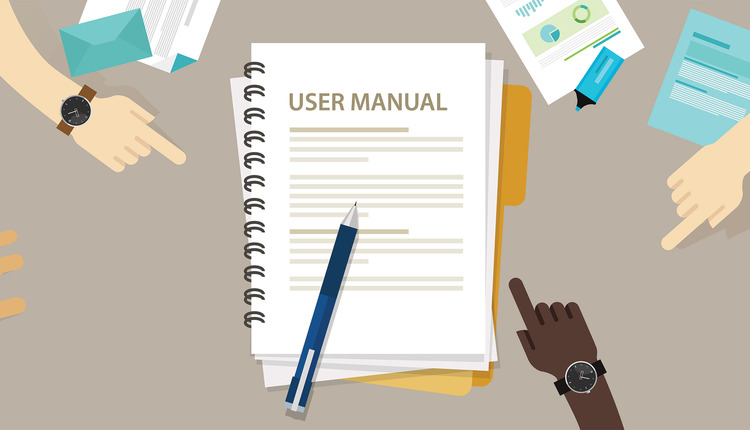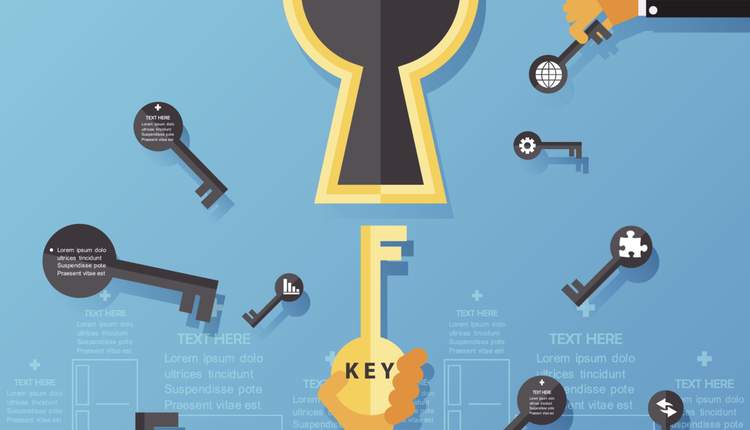Although most of us are not able to influence major changes in our industry, we can prepare for them and take advantage of the opportunities that change presents. For 2015, shippers should take advantage of several opportunities to decrease costs, while being proactive to mitigate rate increases.
USPS MailNo price increase is expected in 2015, yet the question many of us wonder about is: what is going to happen to the "temporary" indigent price increase from last year that raised rates above the allowed change in the CPI? Will rates for mail go down? Don't hold your breath.
Congressional Postal Reform: Will the incoming Congress be able to address the legislative changes needed to return the Post to stability? The current situation was created in 2006 when Congress passed the Postal Accountability and Enhancement Act (PAEA). In my opinion it was dirty politics to hide the $75B the USPS overpaid into civil servant retirement and not increase the deficit. It was a hidden tax increase, thus avoiding the "3rd rail" for political longevity. In return for not having to continue to overpay into this account, the USPS was forced to prepay 50 years' worth of health care in 10 years. The Post has done an incredible job while Congress has tied their hands behind their backs. It's time to take off the handcuffs and let the Post Office thrive.
Expect lively discussion on "Electronic Postmarks"(USPS email with images of what is in your mailbox), 5-day mail delivery (6 or 7 day package delivery), cluster box mandates, reduced delivery standards for overnight mail, plant and office closures/consolidations, transportation infrastructure upgrades and more. Meter users will continue to enjoy a 1 cent (2%) discount on metered letter mail at Retail rates. Presorted First Class mailers will continue to mail the second ounce free.
USPS ParcelsIMpb becomes mandatory January 26th. Without this "Intelligent Mail Package Barcode" your packages will NOT be eligible for Commercial Base (Base) or Commercial Plus Pricing (CPP). Base discounts for Priority Mail for weight/zone average 15% off Retail and CPP averages 29% less. Mailers that used to enjoy these discounts by using an "online" Postage Meter now require some sort of PC software bridge to create IMpb compatible labels. Most mailers lost the default to "Base" discounts last year with their automated systems. Savvy mailers would manually select PM "Base" as the USPS deferred enforcement of this mandate.
Note: Shippers that use PC Postage products have been compliant for a long time. In addition, users also benefit from address standardization and correction that help eliminate delivery delays and inconvenient returns caused by improper addressing.
So, while the meter manufacturers are offering software solutions to their clients, it begs to reason: "Why not simply skip the meter, and simply print the postage on the address label in an easy one-step process?" If you look, you can find online solutions that not only allow you to print fully compliant PC postage shipping labels one at a time, but also do so without any fees. The USPS Click-N-Ship site will do this and allow you to receive "Base" discounts.
What about getting rates BELOW "base" without any minimum volume commitments, label fees or extra charges? Yes, it's out there! It is possible to print all in one labels with postage costs less than "base," maintain an address book, order free shipping supplies and schedule a free pickup.
The Perfect Storm: These 3 Major Changes Have Shaken up the Small Parcel Transportation Landscape
1. Dim Changes: In a nutshell, both UPS and FedEx have removed the three cubic foot exception before applying dimensional weight pricing for all Ground packages. Effective with the 2015 general rate increases, all packages will now be charged the dimensional ("dim") weight rather than the actual weight.
Note: To compute the DIM weight, divide the cube (L x W x D) by your DIM factor. Unless you have negotiated a non-standard DIM factor, the DIM divisor for UPS and FedEx is 166. As an example, a 12" x 12" x 12" package would be 1728/166 = 11 Lbs. This is your DIM weight even if the contents only weigh a pound.
Shipware analyzed the 25 most common boxes used in America and estimate that 32% of all packages will be impacted by this change, resulting in a 17% increase to the average shipper. The good news is that USPS is not changing their DIM policies.
Note: Currently Priority Mail and Parcel Select packages only dimensionalize to outer zones 5-8, with a 1728 exception and at the more favorable 194 DIM factor. Priority Mail and Parcel Select do charge a "Balloon rate" of 20 pounds for packages going to zones 1-5 weighing less than 20 Lbs. when the Length plus Girth exceeds 84" but less than 108".
2. Priority Mail Price Decrease: The USPS has been historically a great competitive option for commercial shippers in the lighter weights, generally 3 Lbs. and under depending upon your level of discount. In September of last year, the USPS dramatically lowered the price for Priority Mail in the inner zones (1-5) and weights up to 40 Lbs. While the official press release on this increase reported a (yawn) .9% decrease for "Base" and 2.3% for "CPP" the affected change was as much as 59% less in selected cells.
3. General Rate Increases (GRIs): As part of their annual rate increases, both UPS and FedEx increased their Ground and Express rates by an average of 4.9%. This is an average across all weights and zones; however, increases vary by weight, zone and service level. For example, Ground packages 1-10 lbs. increased 6.8%. Most air services are going up approximately 7%. In addition, the minimum package charge increased 5.9%, from $6.24 to $6.61, and Accessorial charges which account for as much as 30% of net shipping charges went up across the board.
While some of our readers may not be concerned about shipping as it is "done in the warehouse," aren't we all looking for ways to increase our professional stock
value? Perhaps you should consider positioning yourself as the in-house USPS champion to introduce shipping alternatives to the national private carriers that could decrease costs and improve the delivery transits?
While you deal with the changes in 2015, it is possible to lower your mail and small package transportation spend while simultaneously improving its performance. In all change there is opportunity. Your efforts to capitalize on those opportunities are perhaps the one constant that will drive your success in 2015!
Gordon Glazer, CMDSM, CMDSS, MDP, MDC is Director of Modal Optimization Strategies and Strategic Partnerships at Shipware LLC, an innovative parcel audit and consulting firm that helps volume parcel shippers reduce shipping costs 10%-30%. Gordon is a postal industry veteran with 33 years' experience and is a sought after speaker and industry thought leader. He welcomes questions and comments, and can be reached at 858.879.2020 Ext 108 or gordon@shipware.com.
USPS MailNo price increase is expected in 2015, yet the question many of us wonder about is: what is going to happen to the "temporary" indigent price increase from last year that raised rates above the allowed change in the CPI? Will rates for mail go down? Don't hold your breath.
Congressional Postal Reform: Will the incoming Congress be able to address the legislative changes needed to return the Post to stability? The current situation was created in 2006 when Congress passed the Postal Accountability and Enhancement Act (PAEA). In my opinion it was dirty politics to hide the $75B the USPS overpaid into civil servant retirement and not increase the deficit. It was a hidden tax increase, thus avoiding the "3rd rail" for political longevity. In return for not having to continue to overpay into this account, the USPS was forced to prepay 50 years' worth of health care in 10 years. The Post has done an incredible job while Congress has tied their hands behind their backs. It's time to take off the handcuffs and let the Post Office thrive.
Expect lively discussion on "Electronic Postmarks"(USPS email with images of what is in your mailbox), 5-day mail delivery (6 or 7 day package delivery), cluster box mandates, reduced delivery standards for overnight mail, plant and office closures/consolidations, transportation infrastructure upgrades and more. Meter users will continue to enjoy a 1 cent (2%) discount on metered letter mail at Retail rates. Presorted First Class mailers will continue to mail the second ounce free.
USPS ParcelsIMpb becomes mandatory January 26th. Without this "Intelligent Mail Package Barcode" your packages will NOT be eligible for Commercial Base (Base) or Commercial Plus Pricing (CPP). Base discounts for Priority Mail for weight/zone average 15% off Retail and CPP averages 29% less. Mailers that used to enjoy these discounts by using an "online" Postage Meter now require some sort of PC software bridge to create IMpb compatible labels. Most mailers lost the default to "Base" discounts last year with their automated systems. Savvy mailers would manually select PM "Base" as the USPS deferred enforcement of this mandate.
Note: Shippers that use PC Postage products have been compliant for a long time. In addition, users also benefit from address standardization and correction that help eliminate delivery delays and inconvenient returns caused by improper addressing.
So, while the meter manufacturers are offering software solutions to their clients, it begs to reason: "Why not simply skip the meter, and simply print the postage on the address label in an easy one-step process?" If you look, you can find online solutions that not only allow you to print fully compliant PC postage shipping labels one at a time, but also do so without any fees. The USPS Click-N-Ship site will do this and allow you to receive "Base" discounts.
What about getting rates BELOW "base" without any minimum volume commitments, label fees or extra charges? Yes, it's out there! It is possible to print all in one labels with postage costs less than "base," maintain an address book, order free shipping supplies and schedule a free pickup.
The Perfect Storm: These 3 Major Changes Have Shaken up the Small Parcel Transportation Landscape
1. Dim Changes: In a nutshell, both UPS and FedEx have removed the three cubic foot exception before applying dimensional weight pricing for all Ground packages. Effective with the 2015 general rate increases, all packages will now be charged the dimensional ("dim") weight rather than the actual weight.
Note: To compute the DIM weight, divide the cube (L x W x D) by your DIM factor. Unless you have negotiated a non-standard DIM factor, the DIM divisor for UPS and FedEx is 166. As an example, a 12" x 12" x 12" package would be 1728/166 = 11 Lbs. This is your DIM weight even if the contents only weigh a pound.
Shipware analyzed the 25 most common boxes used in America and estimate that 32% of all packages will be impacted by this change, resulting in a 17% increase to the average shipper. The good news is that USPS is not changing their DIM policies.
Note: Currently Priority Mail and Parcel Select packages only dimensionalize to outer zones 5-8, with a 1728 exception and at the more favorable 194 DIM factor. Priority Mail and Parcel Select do charge a "Balloon rate" of 20 pounds for packages going to zones 1-5 weighing less than 20 Lbs. when the Length plus Girth exceeds 84" but less than 108".
2. Priority Mail Price Decrease: The USPS has been historically a great competitive option for commercial shippers in the lighter weights, generally 3 Lbs. and under depending upon your level of discount. In September of last year, the USPS dramatically lowered the price for Priority Mail in the inner zones (1-5) and weights up to 40 Lbs. While the official press release on this increase reported a (yawn) .9% decrease for "Base" and 2.3% for "CPP" the affected change was as much as 59% less in selected cells.
3. General Rate Increases (GRIs): As part of their annual rate increases, both UPS and FedEx increased their Ground and Express rates by an average of 4.9%. This is an average across all weights and zones; however, increases vary by weight, zone and service level. For example, Ground packages 1-10 lbs. increased 6.8%. Most air services are going up approximately 7%. In addition, the minimum package charge increased 5.9%, from $6.24 to $6.61, and Accessorial charges which account for as much as 30% of net shipping charges went up across the board.
While some of our readers may not be concerned about shipping as it is "done in the warehouse," aren't we all looking for ways to increase our professional stock
value? Perhaps you should consider positioning yourself as the in-house USPS champion to introduce shipping alternatives to the national private carriers that could decrease costs and improve the delivery transits?
While you deal with the changes in 2015, it is possible to lower your mail and small package transportation spend while simultaneously improving its performance. In all change there is opportunity. Your efforts to capitalize on those opportunities are perhaps the one constant that will drive your success in 2015!
Gordon Glazer, CMDSM, CMDSS, MDP, MDC is Director of Modal Optimization Strategies and Strategic Partnerships at Shipware LLC, an innovative parcel audit and consulting firm that helps volume parcel shippers reduce shipping costs 10%-30%. Gordon is a postal industry veteran with 33 years' experience and is a sought after speaker and industry thought leader. He welcomes questions and comments, and can be reached at 858.879.2020 Ext 108 or gordon@shipware.com.











